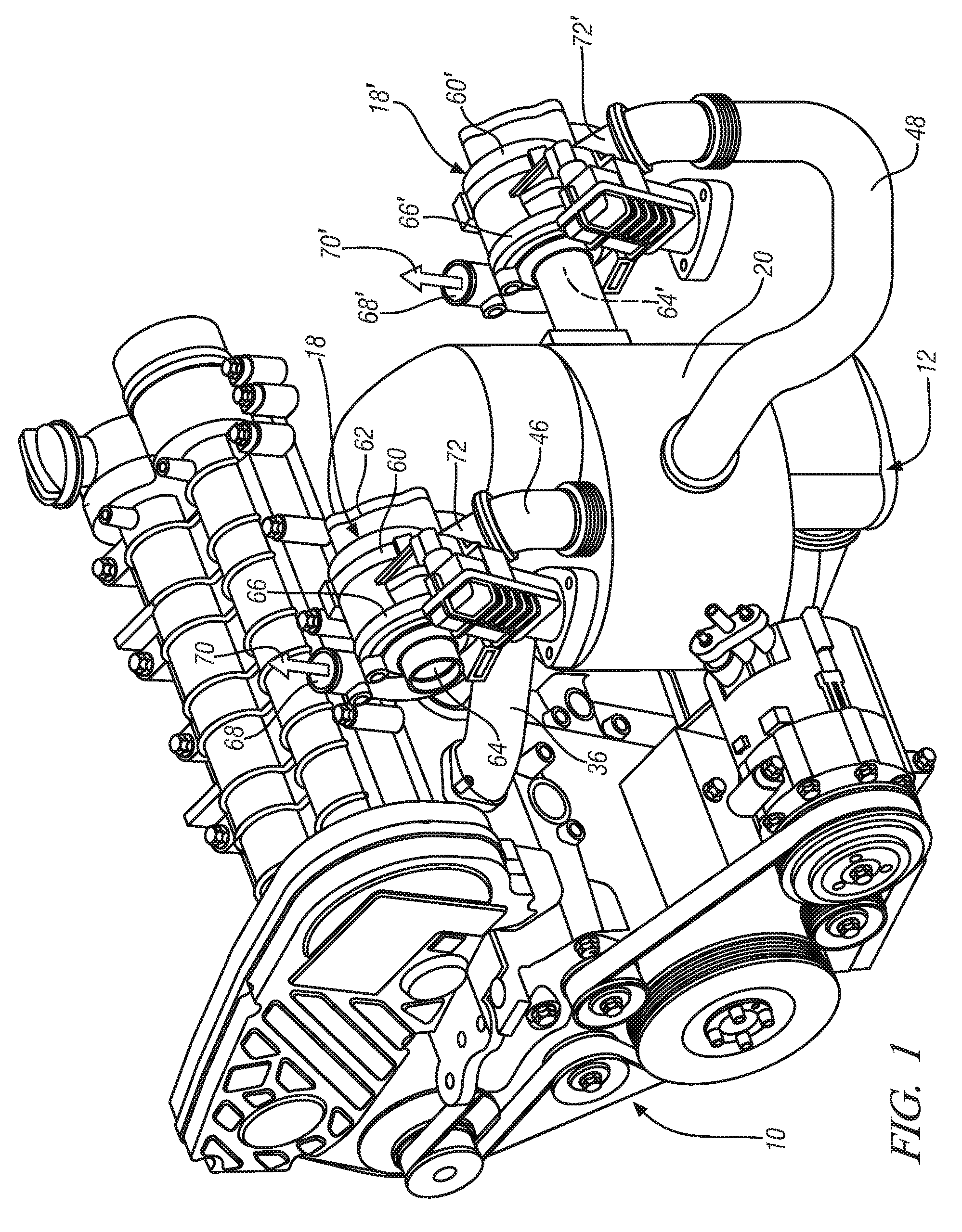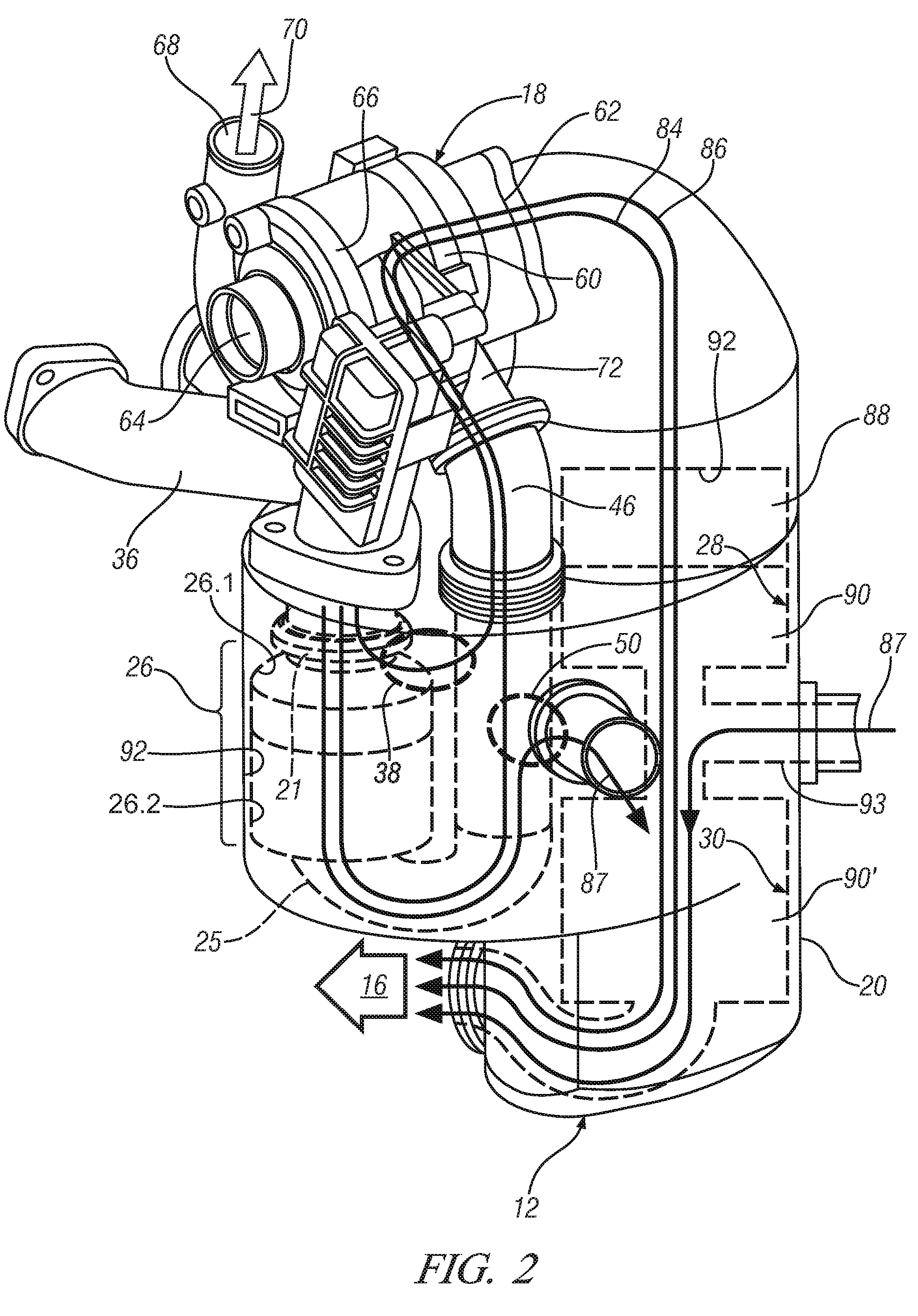Closely coupled exhaust aftertreatment system for an internal combustion engine having twin turbochargers
an exhaust aftertreatment and turbocharger technology, which is applied in the direction of engines, mechanical equipment, machines/engines, etc., can solve the problems of insufficient packaging space for scr, limited commercial application of lean-burn engines, and difficulty in ensuring the quality of the exhaust aftertreatment process
- Summary
- Abstract
- Description
- Claims
- Application Information
AI Technical Summary
Benefits of technology
Problems solved by technology
Method used
Image
Examples
Embodiment Construction
[0013]Referring now to FIGS. 1-5, an exemplary embodiment of an internal combustion engine 10 that is particularly suitable for use in many types of motorized vehicles 1, such as automobiles, light trucks, marine vehicles, ATVs and the like, as well as numerous fixed installation applications, such as generators, pumps and the like. Engine 10 is fluidly coupled to an exhaust aftertreatment system 12, including a plurality of fluidly coupled exhaust aftertreatment devices 14, for treating an exhaust gas flow 16 resulting from its operation. Exhaust aftertreatment system 12 is fluidly coupled to twin turbochargers, including first turbocharger 18 and second turbocharger 18′. In an exemplary embodiment, exhaust aftertreatment system 12 is configured to be used as a close-coupled system in that the exhaust aftertreatment devices 14 are housed in a single housing 20 that may be directly coupled to an exhaust port 24, or to an exhaust manifold 22 that is configured to receive the exhaust ...
PUM
 Login to View More
Login to View More Abstract
Description
Claims
Application Information
 Login to View More
Login to View More - R&D
- Intellectual Property
- Life Sciences
- Materials
- Tech Scout
- Unparalleled Data Quality
- Higher Quality Content
- 60% Fewer Hallucinations
Browse by: Latest US Patents, China's latest patents, Technical Efficacy Thesaurus, Application Domain, Technology Topic, Popular Technical Reports.
© 2025 PatSnap. All rights reserved.Legal|Privacy policy|Modern Slavery Act Transparency Statement|Sitemap|About US| Contact US: help@patsnap.com



